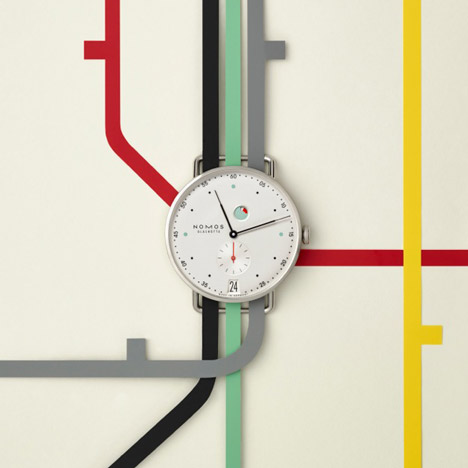
Mark Braun celebrates "craft of making" with Metro watch for Nomos Glashütte
Berlin-based product designer Mark Braun has created his first watch, with the Metro for fine watchmakers Nomos Glashütte (+ interview).
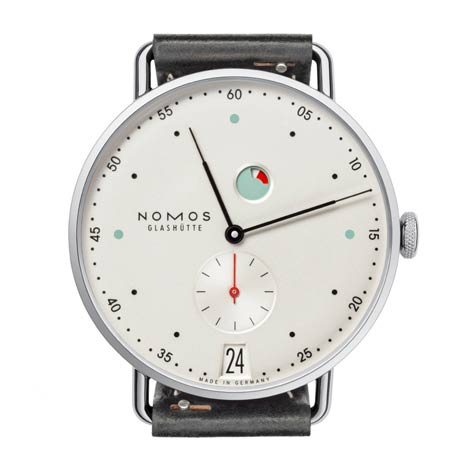
The Metro is manually-wound and bucks the trend for luxury watches that feature large faces and show all their internal workings, said Braun.
"The big brands like Patek Philippe and Omega and so on, they really look for big diameters and show really a lot of the inside of the chronograph," said Braun. "These super large diameters and this show off of technique – it's not what I really like."
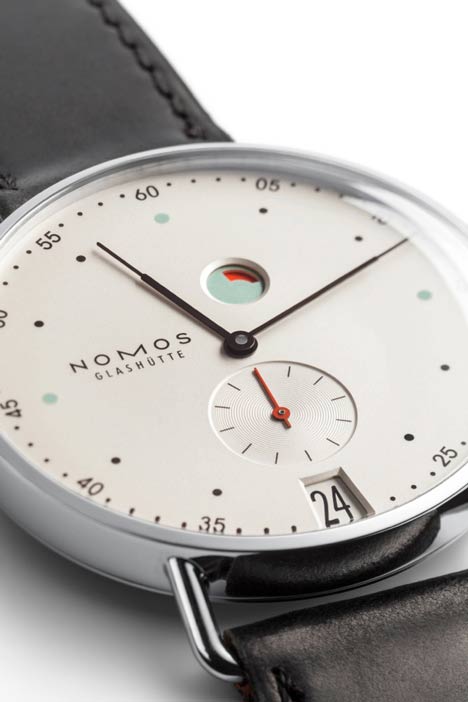
The workings of the timepiece include Nomos' new assortiment – the combination of the balance, balance spring, escape wheel and pallet that powers a mechanical watch – called the Nomos Swing System.
This has freed the brand from using an assortiment by the Swatch Group that many manufacturers are forced to rely on, and makes this watch the first to have all of its elements built in-house at Nomos.
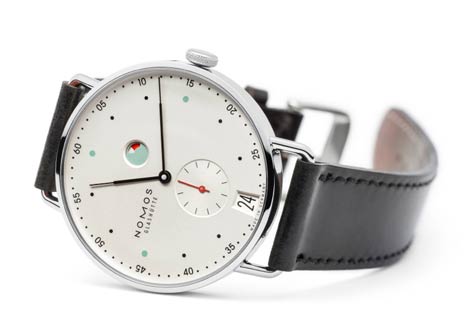
Braun was approached directly by Nomos on the strength of the work he has generated from his own studio over the past 8 years, including furniture, lighting and homeware.
Part of Nomos' appeal for Braun was its use of manual workings, as battery watches are convenient but do not have longevity, he said.
"Battery watches are like fashion and you just need it for one year," said Braun. "[Metro is] a long term design, a slow design and that's something I really like. It's a bit dangerous to be too conservative but I don't think that this is a conservative design."
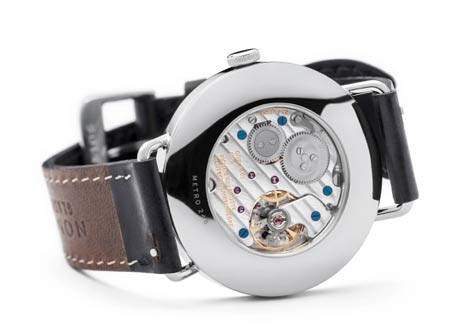
The timepiece he has created features a white face, with mint and red details including a small circle which indicates the amount of time remaining before the mechanism needs to be re-wound. "Because it's an expensive watch you can't be too fashion coloured but I think this [mint] colour has a very strong character," said Braun.
He has chosen to express the precision of the inner functions of the watch in the hands, which are unusually thin and highlight the "craft of making", according to Braun.
At the bottom of the face is a new calendar function with a dial and a date display which has been patented by Nomos.
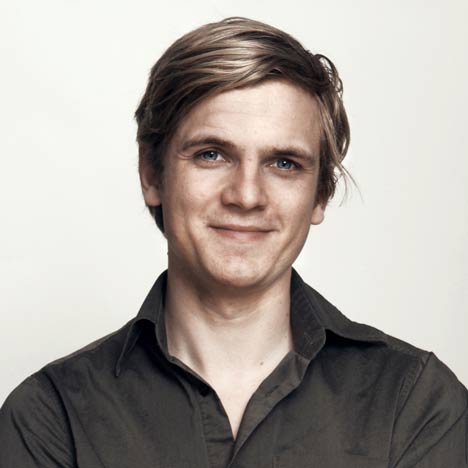
Nomos was established in the town of Glashütte in Saxony, Germany, in 1990 by Roland Schwertner. Its first collection of hand-wound watches, designed by Susanne Günther and inspired by Bauhaus and the German Werkstätte, set the tone for its future ranges.
"The expensive watches are very much about showing the technique, showing value by using diamonds and gold or something like that," said Braun.
"Metro is still proud of what it is and it shows more in a delicate way what it is, not so loud. I think that's also very much Nomos, they like this approach."
Read an edited transcript of Dezeen's conversation with Mark Braun:
Amy Frearson: Could you begin by telling me a bit more about where you come from and what you do?
Mark Braun: Actually I'm not a watch designer. I've designed furniture, lighting and accessories since 2006, so eight years. I think my projects were interesting, so Nomos asked me to do a watch. We worked for almost two years on this project and now it's ready and I'm very happy about it. It's really a great brand and a cool project.
Amy Frearson: Could tell me a little bit about the watch you've designed, and explain the concept behind it?
Mark Braun: The idea was to play with archetypes, so to research where these original shapes come from. The pocket watch has a very nice archetype or shape. They are very pure but they have lots of character.
With the dial there was the goal to translate the precision of the inside of the watch into a dial which is highlighting this craft of making. So when you see the hands they are very thin at the end and this is something I like very much, like the Empire State Building spires they point to the time. And then we have this mint-coloured circle – this is showing when you have to recharge the watch, and I like this colour very much. Somehow because it's an expensive watch you can't be too fashion coloured but I think this colour has a very strong character. You can imagine that the [Metro] watch would have also a textile look which we are working on to show in 2015.
Amy Frearson: One of the main features of the watch is that it's like a classic watch, you have to wind it at regular intervals. Can you tell me why you decided to have this?
Mark Braun: That's something really related to the manufacturers in Glashütte because they have produced watches for 400 years. They have this production still in Germany and they are very proud of the perfect and precise technique inside. So how to translate the tradition into a good and timeless design?
[The design] is still related to the brand identity but it's still very much Mark Braun I think, because it has this translation of archetypes into a contemporary design. And to have this old technique in a new design, because the battery watches they are really a completely different game. Battery watches are like fashion and you just need it for one year, and these kind of watches you can probably give to your son. He likes it and I hope he likes it because it's a long-term design, a slow design and that's something I really like. Working with manufacturers which have high quality and which are open to design. It's a bit dangerous to be too conservative but I don't think that this is a conservative design.
Amy Frearson: Are there any big trends in watch design at the moment that you find interesting?
Mark Braun: I've just been at [watch trade fair] Baselworld, and I think the big brands like Patek Philippe and Omega and so on, they really look for big diameters and show really a lot of the inside of the chronograph. And what I think with these super large diameters and this show off of technique, it's not what I really like.
Metro is still proud of what it is and it shows more in a delicate way what it is, not so loud. I think that's also very much Nomos, they like this approach. The trend is a bit different, I think it's more to show the technique as much as possible and to make big diameters. And the battery watches, are a completely different thing. I love Dezeen Watch Store and there you see what is going on with these kind of more fashion-related watches. But I love Daniel Wellington, I think he is a doing a great job and building a bridge to maybe do the chronograph watches. But that's a bit different price so maybe there are two different trends. The expensive watches are very much about showing the technique, showing value by using diamonds and gold or something like that. A bit classic and conservative.
Amy Frearson: We interviewed Daniel Wellington really recently and he said that he felt there was something missing, a kind of a gap in the market, for a classic watch that is within this price range. Is that something you felt as well?
Mark Braun: Yeah I think Daniel has a bit of the same approach design-wise as I have but he has a different market. His watches have great design, but I think the technique is different.
Amy Frearson: And who do you see as your market for this watch?
Mark Braun: I think it's one of the youngest watches for Nomos, but the buyers were around at the age of 30 and the name of the watch is a bit related to the group who might like it. They're people living in large cities and have a good job and who have meetings and they need a watch beside their iPhone maybe to have the time with them, but of course also like showing their identity with this watch.